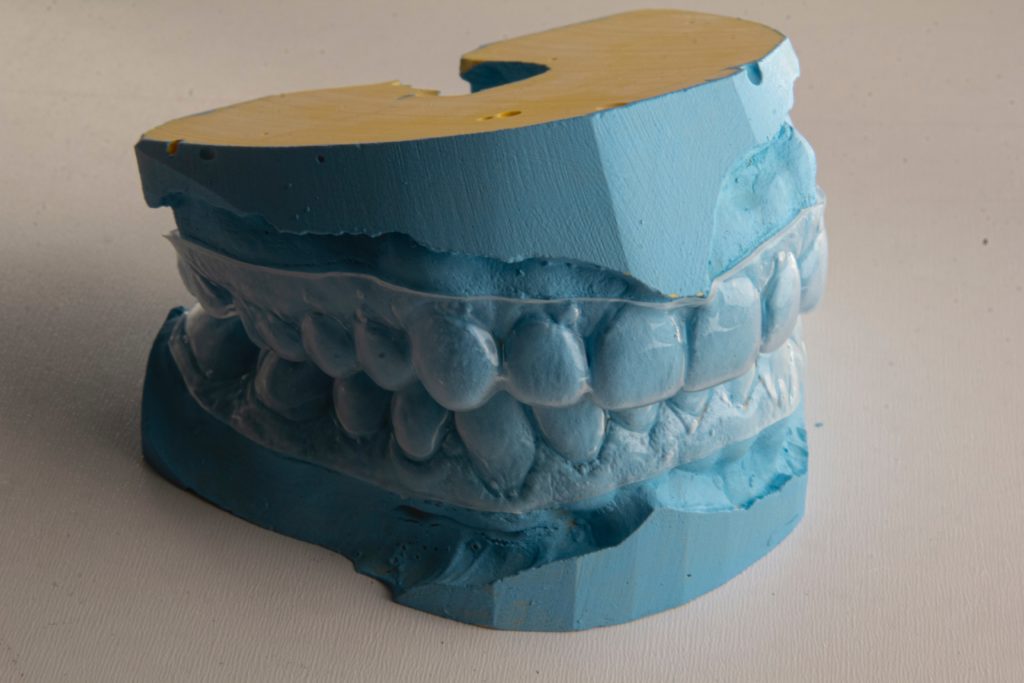Can Invisalign Fix an Underbite?
When it comes to our smiles, both oral health and aesthetics play a pivotal role in our confidence and overall well-being. One common dental issue that can affect both aspects is an underbite. An underbite occurs when the lower front teeth protrude further than the upper front teeth, resulting in a misaligned jaw. This condition can impact not only the appearance of your smile but also your oral health, potentially leading to issues like difficulty chewing, jaw pain, and even speech problems.
In this comprehensive guide, we’ll delve into the world of underbites, exploring their causes, consequences, and most importantly, the solutions available. Specifically, we’ll shine a spotlight on Invisalign, a revolutionary non-surgical approach to correcting underbites. Invisalign has gained widespread acclaim for its discreet and comfortable nature, making it a preferred choice for individuals seeking to transform their smiles without the need for traditional braces or surgery.
So, if you’ve ever wondered, “Can Invisalign fix an underbite?” or if you’re simply curious about your options for achieving a harmonious smile, you’re in the right place. Let’s embark on a journey to discover how Invisalign can help address underbites and set you on the path to improved oral health and a confident, radiant smile.
1. Understanding Underbites
Defining the Underbite
An underbite, scientifically known as “mandibular prognathism,” is a common dental condition characterized by a misalignment of the teeth and jaws. In simpler terms, it occurs when the lower front teeth protrude forward beyond the upper front teeth when the jaws are in a closed position. This misalignment results in an unbalanced bite, affecting both the appearance and functionality of the teeth and jaws.
Differentiating Underbites from Other Malocclusions
It’s essential to distinguish underbites from other malocclusions, as each type of misalignment requires specific treatment approaches. Here’s a brief overview of common dental malocclusions:
Overbite: An overbite is the opposite of an underbite. In this case, the upper front teeth overlap significantly over the lower front teeth when the jaws are closed. Overbites can also affect the aesthetics and function of the smile.
Crossbite: A crossbite occurs when some of the upper teeth sit inside the lower teeth when the jaws are closed. This misalignment can affect both the front and back teeth and may lead to uneven wear.
Open Bite: An open bite is characterized by a gap between the upper and lower front teeth when the jaws are closed. It can affect speech, chewing, and appearance.
Causes and Consequences of Underbites
Understanding the causes and potential consequences of underbites is crucial. Underbites can develop due to a combination of genetic factors, childhood habits (like thumb sucking or prolonged pacifier use), and sometimes due to jaw growth patterns.
The consequences of an untreated underbite can be far-reaching. Beyond the obvious aesthetic concerns, underbites can lead to various oral health problems. These include:
Difficulty Chewing: Misaligned teeth and jaws can make it challenging to chew food properly, potentially leading to digestive issues.
Jaw Pain: The uneven distribution of bite forces can result in chronic jaw pain, temporomandibular joint (TMJ) disorders, and headaches.
Speech Problems: An underbite can affect speech clarity, making it harder to pronounce certain sounds and words.
Tooth Wear: The uneven bite can cause accelerated wear and tear on teeth, potentially leading to tooth fractures and cavities.

The Importance of Early Intervention
Early intervention is paramount when dealing with underbites. Seeking treatment during childhood or adolescence, when the jaws are still growing, can often yield more effective and efficient results. It’s essential to consult with an orthodontist at the first sign of an underbite to explore appropriate treatment options.
Timely intervention not only addresses the aesthetic concerns associated with underbites but also prevents potential long-term oral health issues. In the following sections, we will delve into one such innovative treatment option for underbites: Invisalign. This discreet and non-surgical approach has gained popularity for its ability to transform smiles and improve oral health.
Read and Learn More about Underbite, Overbite and What Invisalign Can Do for Them
2. Invisalign: A Revolutionary Approach
Now that we’ve grasped the basics of underbites and their significance, let’s delve into the innovative solution known as Invisalign. This modern orthodontic treatment has gained widespread acclaim for its effectiveness in addressing underbites and other malocclusions.
Understanding the Invisalign System
Invisalign is a groundbreaking orthodontic system designed to correct various misalignments of the teeth and jaws. Unlike traditional braces, which use brackets and wires, Invisalign employs a set of clear, virtually invisible aligners made from a comfortable and flexible plastic material called SmartTrack®. These aligners are custom-designed for each patient, ensuring a snug fit over their teeth.
The Gradual Transformation
The magic of Invisalign lies in its ability to gently and gradually shift the teeth and jaws into their correct positions. This transformation occurs through a series of aligners, each slightly adjusted to encourage the desired movement. Patients typically wear each set of aligners for about one to two weeks before progressing to the next stage.
Invisalign treatment involves precise planning. Before you even start wearing your first set of aligners, your orthodontist will use advanced 3D imaging technology to map out the entire treatment process. This includes a digital representation of how your teeth will move at each stage. This technology allows you to see the expected progress of your treatment even before it begins.
Advantages of Invisalign
Invisalign offers a range of benefits, making it a preferred choice for individuals seeking orthodontic treatment, including those with underbites:
Discreet Aesthetics: One of the standout advantages of Invisalign is its discreet appearance. The clear aligners are virtually invisible when worn, allowing you to straighten your teeth without drawing undue attention.
Removability: Unlike traditional braces that are fixed in place until the orthodontist removes them, Invisalign aligners are removable. This means you can take them out when eating, drinking, brushing, and flossing. This level of convenience enhances oral hygiene and minimizes dietary restrictions.
Comfortable Fit: Invisalign aligners are designed for comfort. They lack the sharp edges and wires associated with traditional braces, reducing the risk of irritation and mouth sores.
Easier Maintenance: Cleaning Invisalign aligners is straightforward. A gentle brush with a toothbrush and mild soap is usually all that’s needed to keep them clear and fresh.
Shorter Treatment Duration: While the duration of treatment varies depending on individual cases, some patients may experience shorter treatment times with Invisalign compared to traditional braces.
As we journey through this exploration of Invisalign’s role in underbite correction, we’ll delve deeper into its suitability for addressing various types and degrees of underbites. The next sections will uncover the specifics of how Invisalign works its magic on underbites.

3. Invisalign for Underbites
Now that we’ve acquainted ourselves with Invisalign’s innovative approach to orthodontics, let’s dive into how this revolutionary system effectively tackles underbites of various types and severities.
Customized Treatment for Every Underbite
Underbites can manifest in different ways, from mild to severe, and each case is unique. Invisalign recognizes this diversity and tailors treatment plans accordingly.
Comprehensive Assessment: Before commencing treatment, your orthodontist will conduct a thorough assessment of your underbite. This evaluation considers the type and severity of your condition, which guides the creation of a personalized treatment plan.
Precise 3D Imaging: Invisalign employs advanced 3D imaging technology, such as the iTero scanner, to create a digital representation of your teeth and jaws. This high level of precision enables your orthodontist to plan the exact movements needed to correct your underbite.
Smart Attachments: In some cases, particularly those involving complex underbites, your orthodontist may use SmartForce® attachments. These small, tooth-colored bumps are strategically placed on specific teeth to enhance the aligners’ grip and facilitate precise movements.
Aligner Adjustments: Your treatment plan includes a series of custom aligners, each slightly different from the last. These aligners are designed to gradually shift your teeth and jaws into proper alignment, addressing your underbite along the way. Adjustments are meticulously planned to ensure steady progress.
4. Benefits and Advantages
Now that we’ve delved into the transformative power of Invisalign for underbite correction, it’s time to shine a spotlight on the myriad benefits this innovative orthodontic treatment offers.
Advantage 1: Aesthetic Appeal
One of the most compelling advantages of Invisalign, particularly for underbite correction, is its discreet appearance. The clear aligners are virtually invisible when worn, allowing you to smile with confidence throughout your treatment journey. Unlike traditional braces with prominent brackets and wires, Invisalign operates in the background, subtly aligning your teeth and jaws without drawing attention to your orthodontic work.
Advantage 2: Enhanced Comfort
Invisalign aligners are crafted from smooth, medical-grade thermoplastic material, which minimizes irritation and discomfort typically associated with traditional braces. This means no metal wires poking your cheeks or brackets rubbing against your lips. With Invisalign, you’ll experience a higher level of comfort, making your journey to a harmonious smile as pleasant as possible.
Advantage 3: Removability
Invisalign aligners are not only clear but also removable. This feature provides unparalleled convenience in your daily life:
Enjoy Your Favorite Foods: Unlike traditional braces, where certain foods are off-limits due to the risk of damage, you can simply remove your Invisalign aligners before meals. Enjoy all your favorite foods without restrictions.
Easy Oral Hygiene: Maintaining good oral hygiene during orthodontic treatment is crucial. With Invisalign, you can easily remove your aligners for regular brushing and flossing. There are no tricky maneuvers to navigate around brackets and wires.
Special Occasions: If you have a special event or occasion, you have the flexibility to remove your aligners temporarily. Just remember to wear them for the recommended number of hours each day to stay on track with your treatment.
Advantage 4: Improved Confidence
Undergoing orthodontic treatment, especially for an underbite, can sometimes feel daunting. Invisalign offers a confidence boost by minimizing the impact of orthodontics on your daily life. You can attend meetings, social gatherings, and important events without the self-consciousness often associated with traditional braces.
Advantage 5: Fewer Office Visits
Compared to traditional braces, Invisalign typically requires fewer in-office visits. This convenience is especially beneficial for those with busy schedules. Your orthodontist will still monitor your progress, but the need for frequent adjustments is reduced.
Now that we’ve explored the advantages of Invisalign, the next section will touch on its limitations and when it may not be the best treatment option for certain bite problems. It’s essential to consider all aspects when making an informed decision about your orthodontic journey.
5. Limitations and Considerations
While Invisalign boasts numerous advantages, it’s essential to acknowledge its limitations and when it might not be the optimal choice for specific underbite cases:
Limitation 1: Complex Underbites
Invisalign is remarkably versatile and can address various types and degrees of underbites. However, in cases of severe or complex underbites, where significant skeletal adjustments are necessary, traditional braces or a combination of braces and surgery may be recommended. Orthodontists are well-equipped to evaluate the complexity of your underbite and provide guidance on the most suitable treatment approach.
Limitation 2: Compliance is Key
Invisalign’s success hinges on consistent wear. Patients must commit to wearing their aligners for 20 to 22 hours each day to achieve desired results. If aligners are not worn as prescribed, the treatment timeline may lengthen, and the outcome may be compromised. This requirement demands discipline and responsibility, especially for younger patients.
Limitation 3: Patient Cooperation
Successful Invisalign treatment relies on patient cooperation. Aligners should be removed only for eating, drinking, brushing, and flossing. Patients must also adhere to their orthodontist’s instructions regarding aligner changes. Failure to do so can hinder progress and extend treatment duration.
Limitation 4: Cost Considerations
In some cases, the cost of Invisalign may be slightly higher than traditional braces. Patients should consult with their orthodontist to discuss treatment costs and explore potential financial arrangements. Some dental insurance plans may partially cover orthodontic treatment, helping to mitigate costs.
Limitation 5: Not Suitable for All Ages
While Invisalign is suitable for most age groups, it may not be recommended for very young children, as they may struggle with compliance. Additionally, older adults with certain dental conditions may require alternative treatments.
Consulting with an Orthodontist
Ultimately, the decision to pursue Invisalign or an alternative treatment for your underbite should be made in consultation with a qualified orthodontist. They possess the expertise to assess your unique case, determine the most appropriate treatment plan, and address any concerns or limitations.
Invisalign offers remarkable potential for underbite correction, but it’s essential to approach treatment with realistic expectations and a commitment to following your orthodontist’s guidance. Your journey to a harmonious smile begins with a thorough evaluation and a customized treatment plan designed to achieve the best possible results for your specific needs.
Additional Resources and Next Steps
If you’re considering Invisalign as a solution for your underbite, it’s crucial to gather more information and take the necessary steps towards achieving a harmonious smile.
1) Consult with an Orthodontist
The first and most vital step is to consult with an experienced orthodontist. They possess the knowledge and expertise to assess your specific underbite case, recommend the most suitable treatment plan, and address any concerns you may have. During this consultation, you can discuss your goals, treatment options, and expected outcomes.
2) Locate a Reputable Orthodontist
Finding the right orthodontist is essential. Seek recommendations from friends, family, or your general dentist. Additionally, you can use online resources to search for accredited orthodontists in your area. Choose a professional who specializes in Invisalign treatment and has a proven track record of successfully correcting underbites.
3) Schedule an Evaluation
Once you’ve identified a potential orthodontist, schedule an evaluation. During this appointment, the orthodontist will examine your oral health, take necessary X-rays or scans, and discuss your treatment options. Be sure to ask any questions you may have to gain a thorough understanding of the proposed treatment plan.
4) Review Treatment Costs
Understand the costs associated with Invisalign treatment for your underbite. Your orthodontist will provide a detailed breakdown, including any potential insurance coverage or financing options. Be prepared to discuss your budget and explore suitable payment plans.
5) Commit to Treatment
If you decide to proceed with Invisalign for underbite correction, it’s essential to commit to the treatment plan. Compliance with wearing the aligners as prescribed and attending regular check-ups is crucial for achieving the best results.
6) Expect a Journey to a Beautiful Smile
Correcting an underbite takes time, patience, and commitment. Expect a journey that may last several months or longer, depending on the complexity of your case. Throughout this time, focus on the end goal: achieving a beautiful and functional smile.
Where to Find Resources
To explore Invisalign for underbite correction and find additional resources, consider the following:
1) Invisalign Website
Visit the official Invisalign website (www.invisalign.com) for detailed information about the treatment process, success stories, and a tool to locate certified Invisalign providers near you.
2) Consultation
Schedule a consultation with a certified Invisalign provider in your area. They can provide personalized insights and recommendations based on your specific underbite case.



